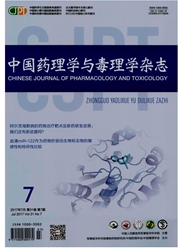

 中文摘要:
中文摘要:
脑卒中作为我国人口第一大致死原因,已成为严重影响国计民生的公共卫生问题,但仅3%~5%患者可接受唯一获准的缺血性脑卒中药物组织型纤溶酶原激活剂治疗,出血性脑卒中更是无药可用。因此,脑卒中药物治疗迫切需要解决。尽管目前已认识到神经保护剂可作为缺血性脑卒中和出血性脑卒中治疗的共性策略,但大量神经保护剂在临床试验中的转化失败,使得脑卒中药物研究成为世界性难题。本文将结合当前脑卒中治疗策略和药物研发现状,阐述靶向兴奋毒性、氧化和硝化应激、炎症反应的脑卒中损伤机制及相应药物的临床试验进展,并从新的视角提出增强机体内在防御机制作为脑卒中治疗的新策略,重点阐述本课题组研究的烟酰胺磷酸核糖转移酶(Nampt)-烟酰胺腺嘌呤二核苷酸防御系统及其抗脑卒中新靶点Nampt,以及在研新药烟酰胺单核苷酸。希望通过不懈努力,能够破解脑卒中治疗的瓶颈问题,减轻社会和家庭的经济负担和精神压力,造福于人类。
 英文摘要:
英文摘要:
As the first most common cause of death in China,stroke has become a public health problem that seriously affects national economy and people′s livelihood. Unfortunately,only 3% to 5% of stroke patients receive tissue plasminogen activator(tPA)treatment,the only pharmacological therapy approved for ischemic stroke,and no drug is available for hemorrhagic stroke. Therefore,there is an urgent need to develop new drugs for stroke therapy. Despite the awareness that neuroprotective agents could be a common strategy for the treatment of both ischemic and hemorrhagic stroke,numerous neuroprotective agents have showed failure in clinical trials. Combined with the current therapeutic strategies and drug development of stroke,this paper elaborated the stroke injury mechanisms and corresponding clinical drug research targeting excitotoxicity,oxidative and nitrosative stress,and inflammation. From a new perspective,this paper has proposed a novel therapeutic strategy targeting inherent defense mechanisms against stroke,with nicotinamide phosphoribosyltransferase(Nampt)- nicotinamide adenine dinucleotide defense system as an example to present our experimental evidence that Nampt can serve as an anti-stroke target and nicotinamide mononucleotide as an anti-stroke agent under development. It is hoped that the bottleneck of stroke therapy can be overcome with unremitting efforts so as to reduce the financial burden and mental stress,and bring benefits to people around the world.
 同期刊论文项目
同期刊论文项目
 同项目期刊论文
同项目期刊论文
 The combination of atenolol and amlodipine is better than their monotherapy for preventing end-organ
The combination of atenolol and amlodipine is better than their monotherapy for preventing end-organ Perivascular adipose tissue-derived visfatin is a vascular smooth muscle cell growth factor: role of
Perivascular adipose tissue-derived visfatin is a vascular smooth muscle cell growth factor: role of Blood pressure variability is more important than blood pressure level in determination of end-organ
Blood pressure variability is more important than blood pressure level in determination of end-organ 期刊信息
期刊信息
